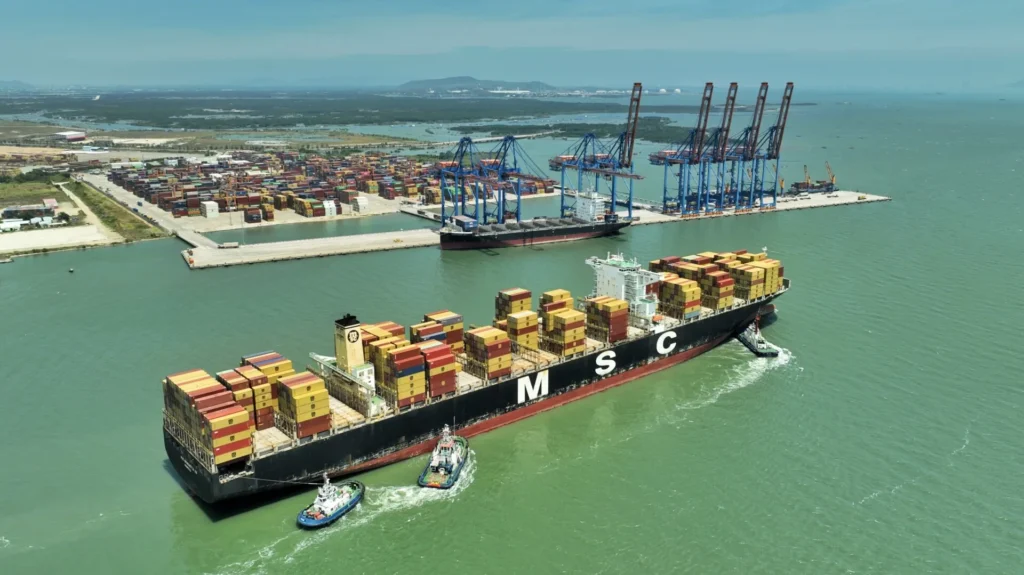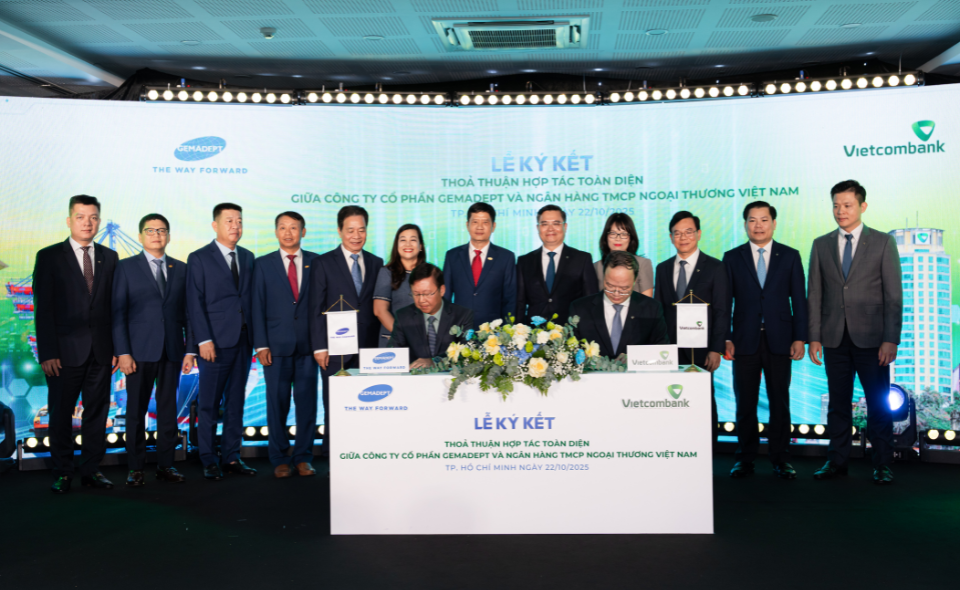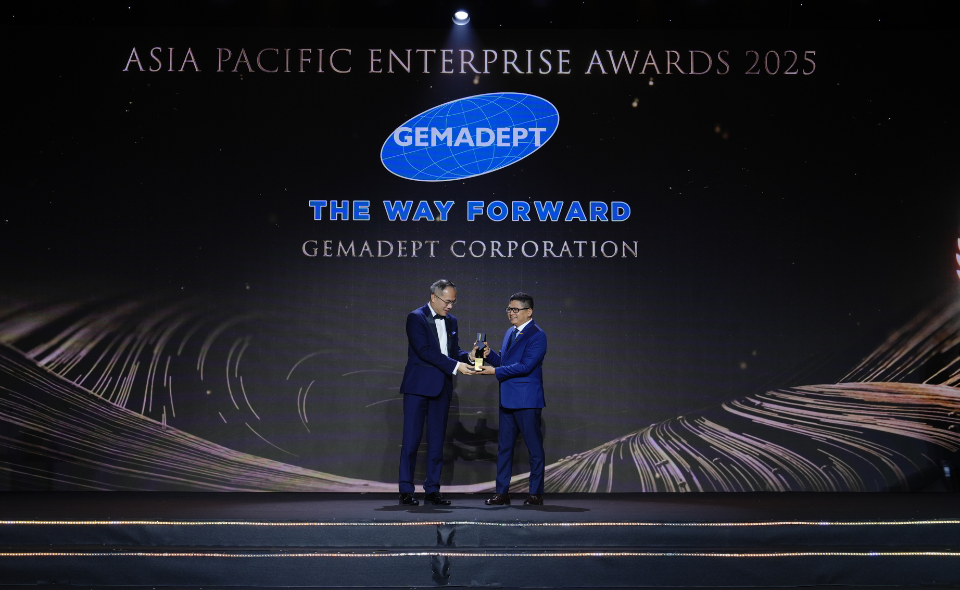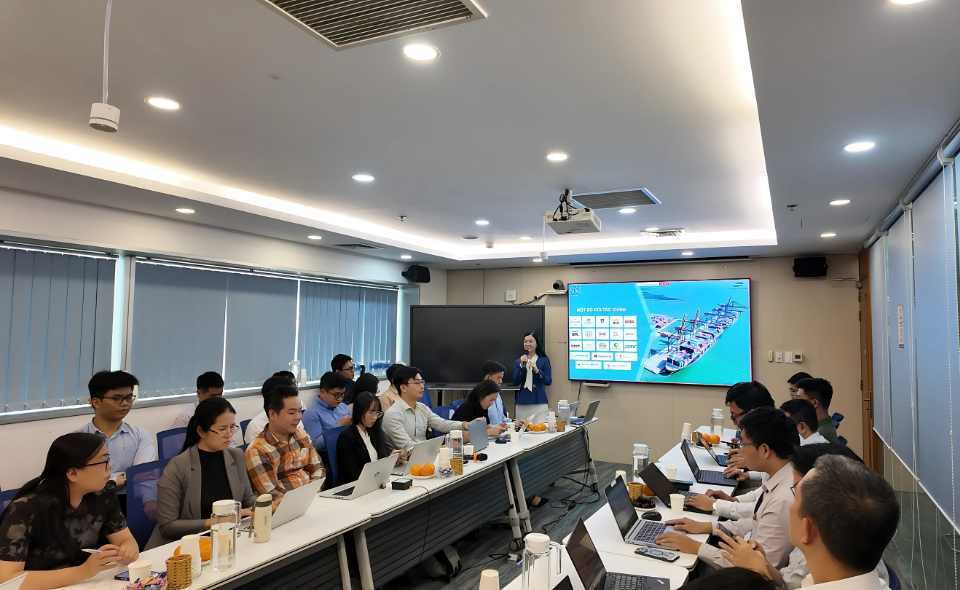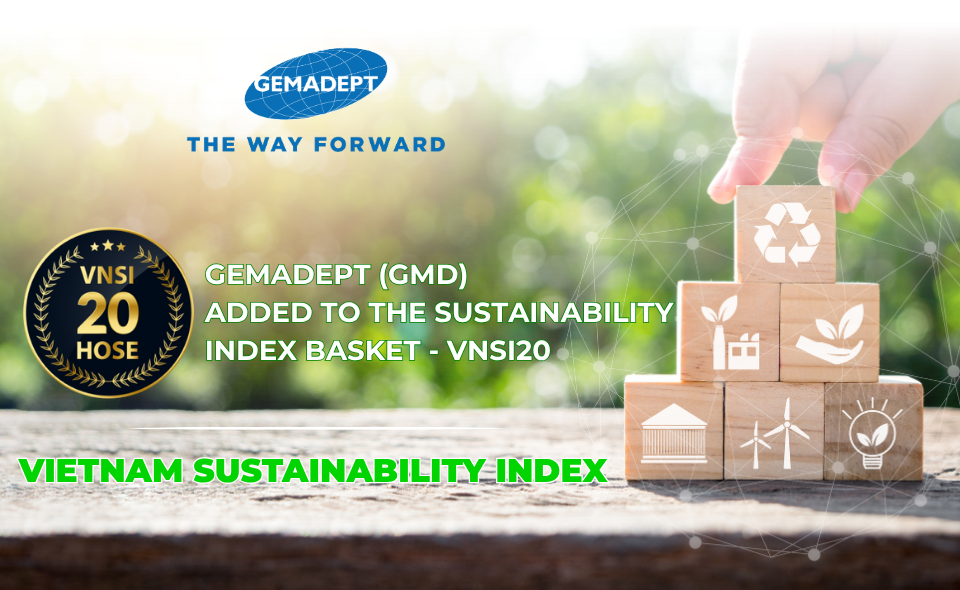(VNF) – Ms. Nguyễn Thị Thu Thảo, Head of Investor Relations at Gemadept Corporation (HoSE: GMD), shared this insight in an interview with VietnamFinance, discussing the Company’s outlook in particular and the Vietnamese seaport industry in general amid the impacts of the ongoing tariff war.
Flexible Response to Tariff Impacts
- Vietnam is among the countries most affected by the tariff “war” initiated by the U.S. administration. As one of Vietnam’s leading port and logistics enterprises, how has Gemadept been impacted in recent times?
If a tariff rate of up to 46% is imposed, Vietnam will face significant adverse impacts as American businesses seek alternative suppliers, disrupting the current supply chains of Vietnamese enterprises.
Currently, while Vietnam and the United States are still in the negotiation process, the impacts of tariff measures have become increasingly evident across various sectors, including seafood, textiles, furniture, logistics, and seaports. Shipping lines, airlines, and logistics firms have been forced to restructure their supply chains and adjust transportation routes, while manufacturers are diversifying and seeking new markets to mitigate risks.
The Vietnamese government has responded with calmness and flexibility, introducing measures to cope with the new tariff policies—many of which have shown initial positive results.
Amid challenges lie opportunities. In April of 2025, Vietnam’s total import-export turnover rose by more than 21% year-on-year. Many experts believe that exports to the U.S. will continue to experience strong growth in Q2/2025, thanks to the continuation of the “frontloading” trend, as businesses rush to ship goods ahead of potential tariff enforcement.
In the medium term, Vietnam still holds distinct advantages, alongside its free trade agreements (FTAs) with various countries. Therefore, domestic businesses continue to have ample opportunities to focus on expansion and explore new alternative markets, such as the EU and Intra-Asia regions. Notably, Vietnam could become a destination for empty containers post-negotiations, awaiting signals of market recovery.
For Gemadept, despite some concerns, given the current situation, the Company is still committed to its business plan targets and have not adjusted down the production volume set for 2025. In 2025, the planned operational volume at Nam Dinh Vu Port is expected to be 1.35 million TEU (the port’s capacity will increase by 50% from its current capacity, reaching 2 million TEU by the end of 2025 when Phase 3 is completed and operational). The projected volume at Gemalink Port is 1.7 – 1.8 million TEU.
It is also worth noting that cargo volumes bound for the U.S. account for only 10% at Nam Dinh Vu Port and 20–25% at Gemalink. Therefore, even if the tariff scenario becomes reality, the direct impact on Gemadept is expected to be limited.
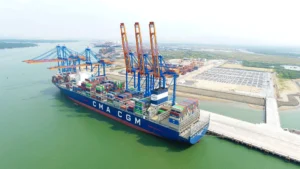
- Gemadept has long maintained built-in mechanisms to cope with economic downturns and crises. How has the Company activated these mechanisms recently, and what results have been achieved?
Amid a market landscape characterized by both volatility and emerging opportunities, Gemadept has implemented an adaptive development strategy based on three main pillars.
First, proactive risk management and response. Since 2023, Gemadept has been developing contingency plans to prepare for market fluctuations. The Company actively conducts scenario planning and analysis to formulate flexible response strategies, particularly in anticipation of unexpected developments such as tariff policy shifts.
Second, strong diversification and strategic focus. Gemadept is proactively adjusting its service route structure, diversifying markets, and actively pursuing routes and cargo sources that are less affected to reduce reliance on the US market. The Company has identified Intra-Asia as a strategic core market with large and more stable growth potential, increasing investment and developing specialized services for this region (especially through Nam Dinh Vu Port). Simultaneously, the company is attracting more routes to Europe, Africa, Canada, and Brazil to diversify cargo sources and partners.
Third, operational efficiency and value creation for customers and partners. Beyond volume growth, the Company places strong emphasis on increasing revenue per TEU (Rev/TEU). It achieves this by fully leveraging its unique integrated port and logistics ecosystem to deliver value-added chain services—from in-port operations to comprehensive logistics across six sectors—providing customers with a one-stop-shop solution. Gemadept’s goal is to optimize operational efficiency by offering high-quality services, effective logistics solutions, and cost optimization.
Nam Dinh Vu Port Cluster to Increase Capacity by Over 50% in 2025
- Gemadept previously announced that Phase 3 of the Nam Dinh Vu Port project will become operational by the end of 2025. Could you share more specific updates on the current progress? What contribution will the entire Nam Dinh Vu Port Cluster make to Gemadept’s operations once it is fully in service?
Phase 3 of Nam Dinh Vu is currently under construction as scheduled and is expected to be put into operation in October 2025. Once completed, the total capacity of the Nam Dinh Vu Port Cluster will exceed 2 million TEUs—an increase of more than 50% compared to its current throughput.
Nam Dinh Vu is one of Gemadept’s key port projects. The Port stands out for its prime location, large scale, and capacity to accommodate the largest vessels operating in the Dinh Vu area. The Port boasts a favorable position, situated within the Nam Dinh Vu Industrial Park—the most crucial international and domestic commercial cargo transportation hub in the entire North (right at the mouth of the Bach Dang River with deep draft and a wide turning basin). Nam Dinh Vu Port is the closest gateway to the sea compared to other ports in the Hai Phong area.
Covering an area of 65 hectares, with seven berths spanning 1.5 kilometers and the capacity to handle container vessels of up to 50,000 DWT, the Nam Dinh Vu Port Cluster will become the largest and most advanced river port in northern Vietnam and be able to accommodate the largest feeder and intra-Asia vessels in the river port region.
In recent years, leveraging the upgraded Ha Nam Canal and the inherent advantages of the Nam Dinh Vu Port Cluster, Gemadept has successfully attracted new services and gained strong support from key shipping lines, setting favorable conditions for the successful launch of Phase 3.
Building a Port is Straightforward; Operating It Efficiently is The True Challenge
- The divestment from Gemalink was planned a while ago, but it hasn’t been executed yet. Can the Gemadept elaborate on this?
The goal of both parties in the joint venture is to find a leading shipping line partner with good cargo sources. This will optimize Gemalink’s operational capacity, bringing the greatest efficiency not only to Gemalink but also to Gemadept’s entire ecosystem, and opening up opportunities for collaborative development.
We are currently in ongoing discussions with several potential partners.
- Regarding port development, the Gemadept–SSA joint venture has submitted a proposal for the Cai Mep Ha port project. What is the latest update, and is the Company concerned about heightened competition for this opportunity?
This is a large-scale project, with interest from 7 to 8 domestic and international investors. Gemadept, in collaboration with its joint venture partner SSA, continues to explore and assess investment possibilities. In the port industry, construction is just the beginning—successful operations require deep expertise, strong capabilities, a well-connected support network, and the trust of customers and partners.
A seaport isn’t just a project; it’s a national resource. Building and operating ports with maximum efficiency helps strengthen the national economy. Gemadept has 35 years of industry experience and partnerships with leading global shipping lines. With its expanded port and logistics ecosystem, Gemadept will continue to seek investment opportunities in core operations to enrich its port and logistics ecosystem. The Company will also participate in national projects, invest in developing green and smart ports, meet the demanding requirements of partner shipping lines, and contribute to the country’s economic growth.
- Another issue of interest to investors and shareholders is the progress of Gemadept’s divestment from its rubber segment. What is the current status?
Conditions for the rubber segment divestment have improved. More potential buyers are now in negotiation, the rubber latex market has shown signs of recovery, and all necessary legal documents for the transfer are ready.
Gemadept has established a dedicated task force to oversee the divestment process and is currently working closely with capable and experienced partners who have shown genuine interest. The Company expects to complete the transaction within 2025.
Thank you for your time!
Source: VietnamFinance

